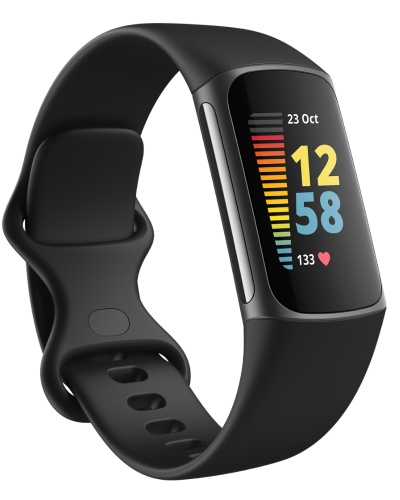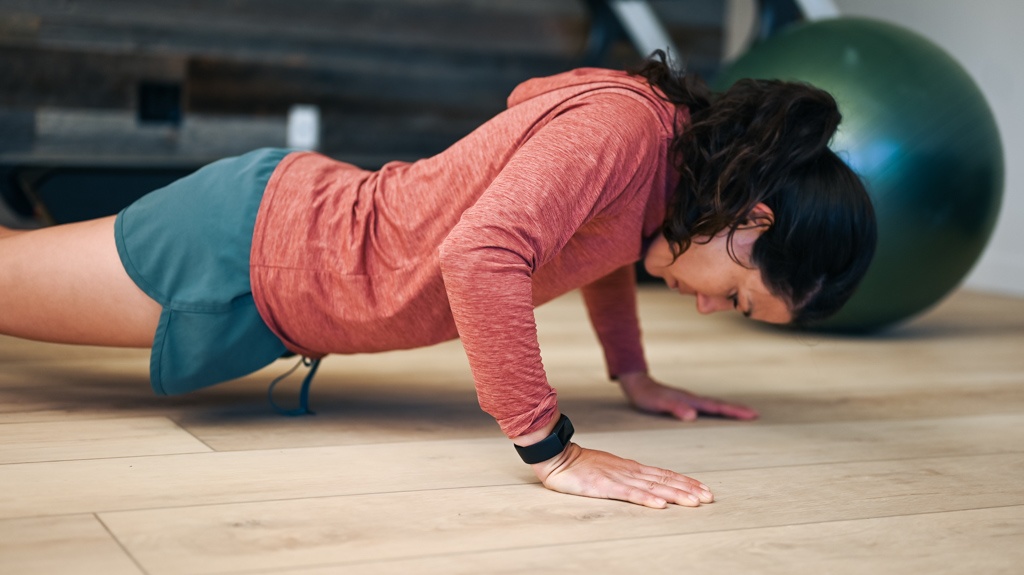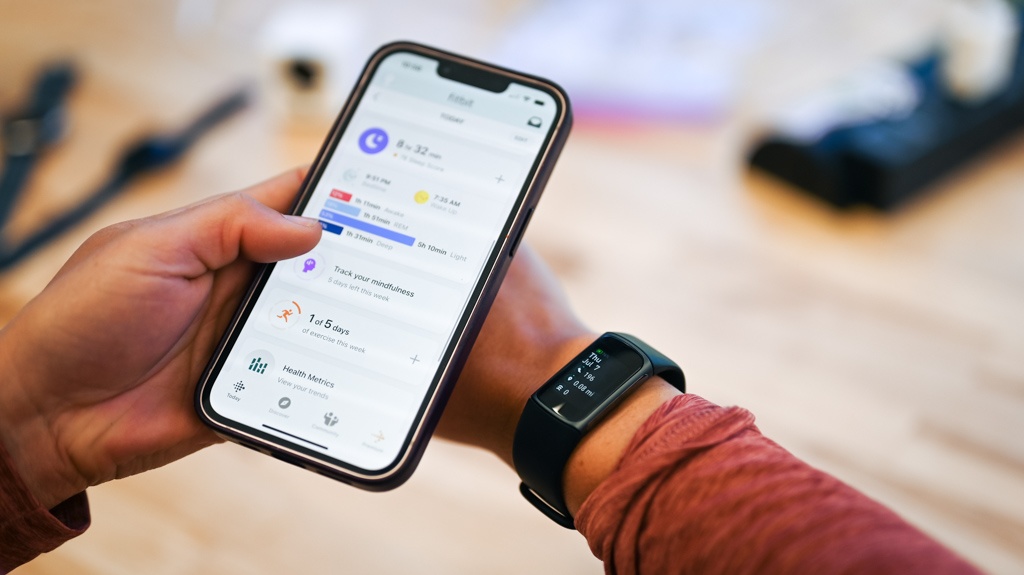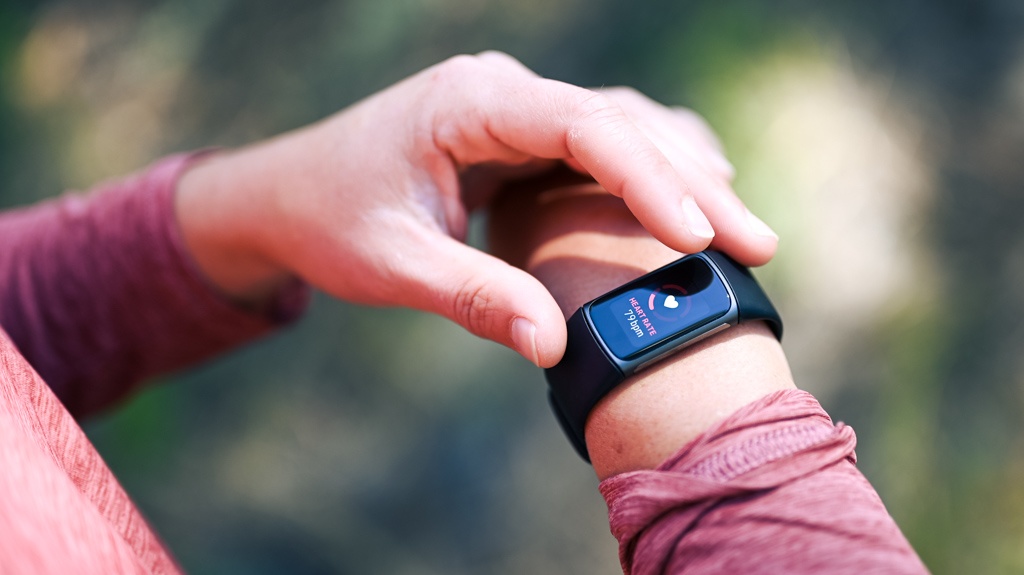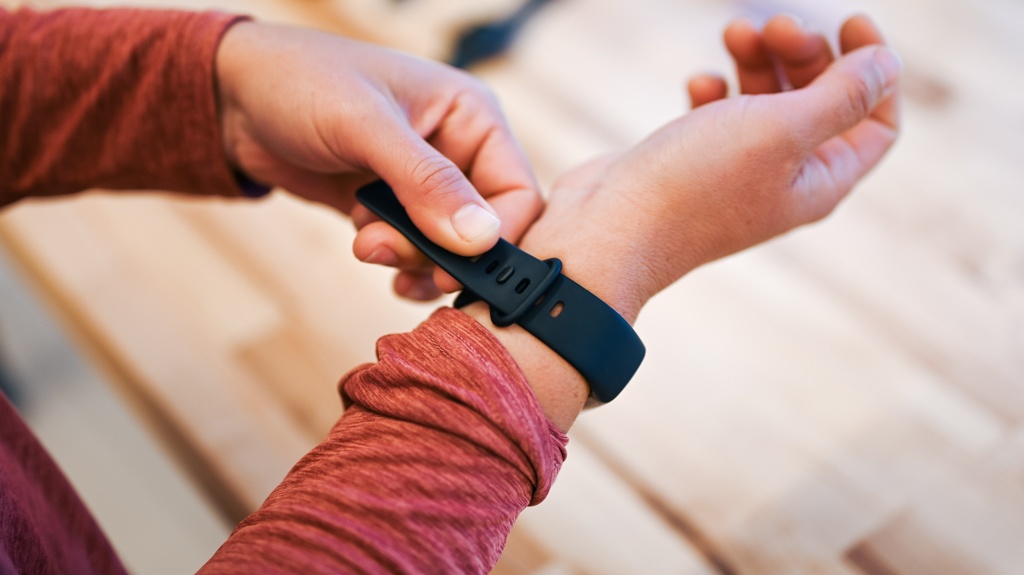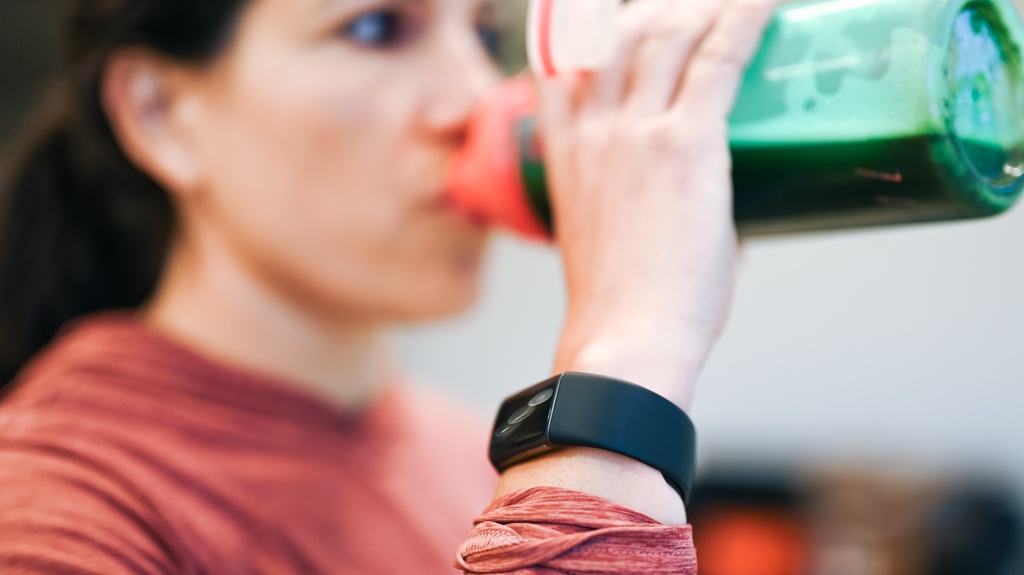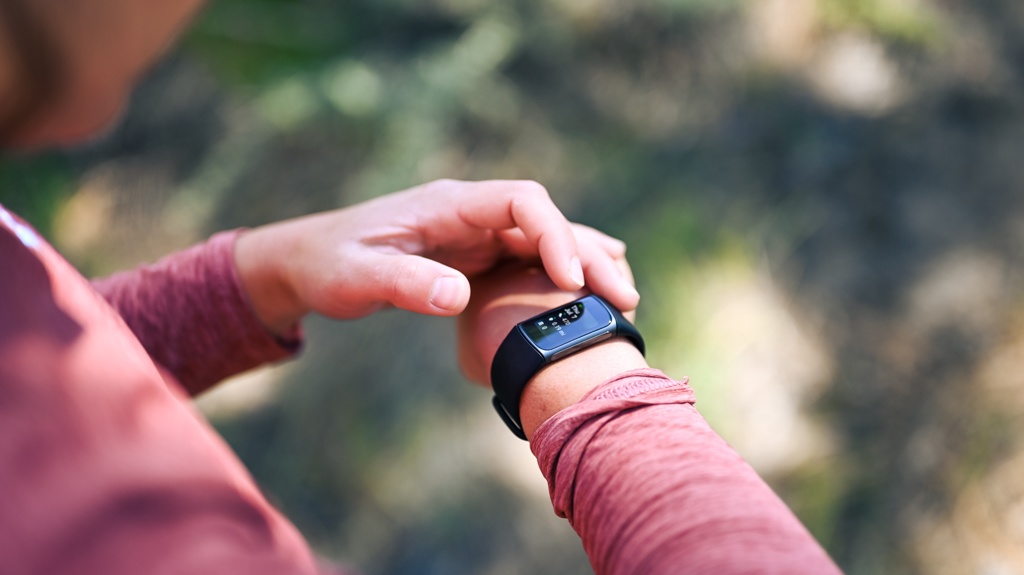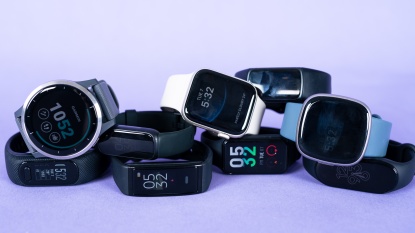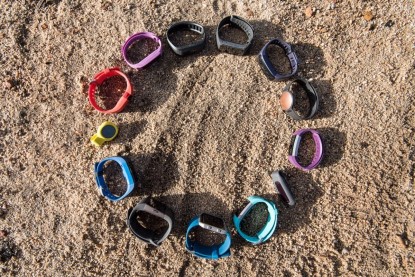Fitbit Charge 5 Review
Our Verdict
Compare to Similar Products
 This Product Fitbit Charge 5 | |||||
|---|---|---|---|---|---|
| Awards | Best Bang for the Buck | Best Buy on a Tight Budget | |||
| Price | $150 List $144.99 at Amazon | $100 List $99.95 at Amazon | $150 List $149.99 at Amazon | $50 List $49.99 at Amazon | $60 List |
Overall Score  |
|||||
| Star Rating | |||||
| Bottom Line | A small display and a lack of responsiveness caused this average fitness tracker not to fall behind in our testing | We recommend this product if you're looking for an affordable and lightweight fitness tracker that offers excellent fitness features | This tracker is highly recommended for data enthusiasts. It logs extensive information and presents it through numerous graphs for detailed analysis | For individuals on a tight budget who can overlook inaccurate heart rate monitoring or a lack of dieting features, this could be an excellent choice | While this tracker is inexpensive, we recommend exploring more accurate alternatives that can provide you with greater reliability and functionality |
| Rating Categories | Fitbit Charge 5 | Fitbit Inspire 3 | Garmin Vivosmart 5 | Amazfit Band 7 | Xiaomi Mi Band 7 |
| Fitness Impact (40%) | |||||
| Health Impact (30%) | |||||
| Ease of Use (15%) | |||||
| Display (10%) | |||||
| Ergonomics (5%) | |||||
| Specs | Fitbit Charge 5 | Fitbit Inspire 3 | Garmin Vivosmart 5 | Amazfit Band 7 | Xiaomi Mi Band 7 |
| Heart Rate Monitor | Yes | Yes | Yes | Yes | Yes |
| Altimeter (stair tracking) | No | No | No | No | No |
| Manufacturer Stated Battery life | Up to 7 days | Up to 10 days | Up to 7 days | Heavy Usage: 12 Days Typical Usage: 18 Days Battery Saver Mode: 28 Days |
Heavy Usage: 9 Days Typical Usage: 14 Days |
| Measured Charge Time | 2 Hours | 1.25 Hours | 1.5 Hours | 1.75 Hours | 1.5 Hours |
| Sensors | 3-Axis accelerometer, optical heart rate monitor, GPS + GLONASS, red and infrared sensors for blood oxygen (SpO2) monitoring, ambient light sensor, device temperature sensor (skin temperature variation available in the Fitbit app), multipurpose electrical sensors compatible with ECG app & EDA Scan app | 3-Axis accelerometer, optical heart rate monitor, red and infrared sensors for blood oxygen (SpO2) monitoring, ambient light sensor | Garmin Elevate™ wrist heart rate monitor, accelerometer, ambient light sensor, pulse OX blood oxygen saturation monitor | BioTracker™ 3.0 PPG biometric sensor (supports blood-oxygen, 1PD + 2LED), 3-Axis acceleration sensor, geomagnetic sensor |
High precision 6-axis sensor and PPG heart rate sensor 6-axis sensor: Low power-consumption 3-axis accelerometer and 3-axis gyroscope PPG heart rate sensor |
| Memory | 7 days of detailed motion data, minute by minute; daily totals 30 days | Saves 7 days of detailed motion data, minute by minute, Saves daily totals for the last 30 days, Stores heart rate data at one-second intervals during exercise tracking and at five-second intervals all other times | 7 timed activities, 14 days of activity tracking data | Not mentioned on site | Not mentioned on site |
| Water Resistance | 5 ATM | 5 ATM | 5 ATM | 5 ATM | 5 ATM |
| Notifications | Text, call, push notifications | Text, call, push notifications | Text, call, push notifications | Text, call, push notifications | Text, call, push notifications |
| GPS Tracking | Yes | No | No | No | No |
| Music Control | No | Yes | Yes | No | Yes |
| Sleep Tracking | Yes | Yes | Yes | Yes | Yes |
Our Analysis and Test Results
We think the Fitbit Charge 5 is an excellent choice for those who are fans of the Fitbit ecosystem. The Charge 5 adds a lot of new software updates. Most of these new features are included with Fitbit premium, which must be renewed after the first month of purchase. For those seeking a sleek design that gets the job done, the Charge 5 will be your cup of tea.
Performance Comparison
Fitness Impact
In our evaluation, we began testing fitness traceability, particularly this fitness tracker's ability to measure steps walked, cycling, workout intervals, and steps climbed. We also test the quality and engagement from the included community features. After compiling our results, we concluded that this fitness tracker performed slightly above average.
Our step traceability test produced average results from three separate trials; we found a 34-step differential between the tracker's step count and our own. Cycling was a little more dubious since the three metrics available, MPH, distance, and time produced inconsistent results. In some trials, the tracker could record top speed, while in other trials, it did not. Lastly, while tracking steps, the Charge 5 does not have an altimeter (a meter that determines altitude).
Health Impact
For this test, we analyzed the health performance of the Fitbit Charge 5 with five separate metrics. We tested the heart rate monitor, dieting features, lifestyle features, sleep tracking, and waking alarm. Here, the Fitbit Charge 5 performed remarkably well.
We were most impressed with the food diary feature because it is intuitive and easy to use. Logging food is as easy as scanning a barcode or entering a key phrase. The user can accurately adjust the amount of food as well.
On the other hand, our heart rate monitor test prevented the Fitbit Charge 5 from reaching a perfect score. We found that the monitor was not adept at responding to sharp fluctuations in heart rate. At one point in the testing, we retook a reading, which was still about 15 bpm off. With that said, the heart rate monitor is still accurate regarding most other activities that do not require sudden changes in heart rate.
Ease of Use
No matter how good a fitness tracker is, it is useless if the end user can not easily comprehend how to work it. Here we measured the Fitbit Charge 5 performance across battery life durability, ease in synching/pairing across devices, intuitiveness of the phone app, ease in navigating the menu, ease of equipping, and its water resistance. In this metric, the Fitbit Charge 5 performed relatively well.
Our testing found that the tracker's main menu was particularly user-friendly. When accessing the main menu, the user can easily swipe through the various options, making it effortless to find the relevant metric. Paring the device is quick and simple, taking only a few seconds. Battery life lasts around seven days, requiring 2 hours of charge.
Ergonomics
Next, we reviewed how the Charge 5 ranks in comfortability and profile design. This metric accounts for 15% of each fitness trackers overall score.
The Charge 5 has a similar design to previous models, except that the band follows the design of the Apple watch. We found that the band wrapped a little too tight, causing some pressure against our wrists and making it slightly uncomfortable to wear. Other than that, the Fitbit Charge 5 is rather low-profile, sleek, and smooth in design.
Display
Our last test was interested in the quality of the display. We measured screen visibility, responsiveness, smart notifications, extensive display, and time/date display. We were disappointed in the results as we thought they were below the standards of the Charge series.
Our greatest concern with the display is the lack of visibility in the sun. The small display makes it especially difficult to angle it correctly to make out the small font. Additionally, we found that it lacked responsiveness, especially with L/R movements.
Should you buy the Fitbit Charge 5?
We believe that the Fitbit Charge 5 is a solid all-around fitness tracker that falls short compared to what we are used to from the Charge series. There are indeed new features on the Charge 5, but we did not feel it warrants an upgrade. We recommend other options in our test lineup.
What other Fitness Trackers should you consider?
If you are looking for a fitness tracker that is friendly to the wallet and you don't need a ton of added features, then the Xiaomi Band 7 is the tracker for you. On the other hand, if you are in the market for a high-performance tracker, check out the Garmin Vivoactive 4 or the Apple Watch SE Gen 2.


